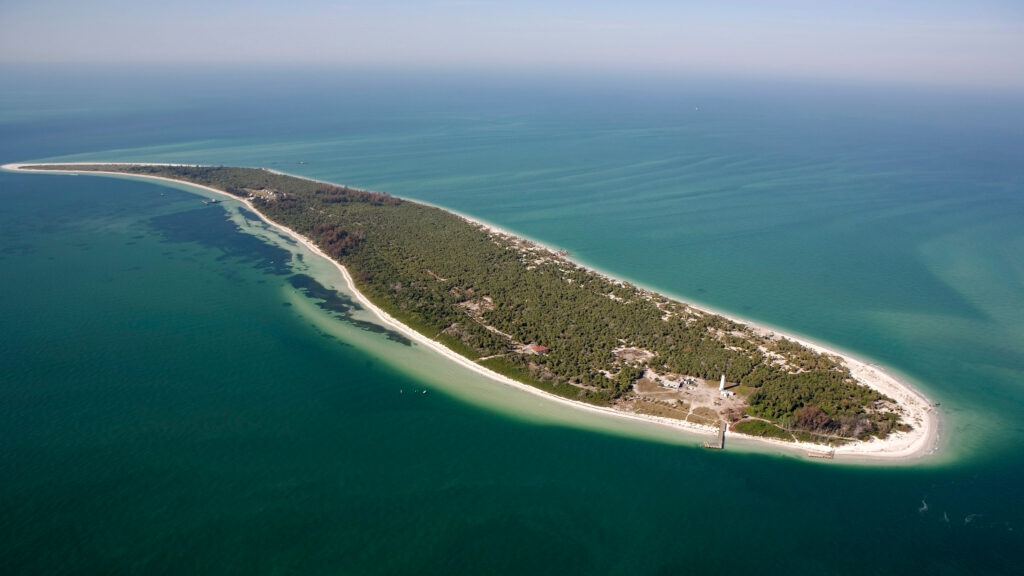By Esel Ro, Audubon Florida’s Write for Climate program
One of my fondest memories after moving to Florida was my first time visiting Egmont Key State Park and seeing its vibrant avian life. The oystercatchers diligently foraging mollusks for their chicks and brown pelicans nesting amid the mangroves remain etched in my mind.

Yet, in the passage of nearly a decade, alarming alterations have unfurled before me.
Erosion has gnawed away at the shores of the island, compelling its feathered residents to seek refuge on higher ground for stable nesting sites or abandon their homes altogether. The once bustling landscape has now withdrawn into its own diminutive and silent world.

At present, Egmont Key retains approximately 200 acres of dry land, witnessing a loss of 30% since 2004. The ongoing disappearance of the land persists at a staggering rate of 4 acres per year due to exacerbating rising sea levels, disrupted sedimentation patterns from dredging projects and relentless tropical storms in recent years.
In conjunction with the ongoing dredging material placement efforts spearheaded by the Florida Department of Environmental Protection and the U.S. Army Corps of Engineers, these agencies can integrate a “living shorelines” approach. This strategy entails: 1) utilizing bioengineering with native coastal shoreline vegetation 2) implementing oyster reef restoration initiatives 3) integrating the hybridization of submerged breakwaters and artificial reef installations to maximize erosion control and amplify habitat benefits.
The fate of Egmont Key beckons us to act, lest its vanishing shores and birds become a haunting testament to our inaction.
Esel Ro is a student at the University of South Florida. She plans to graduate this fall with a major in biology. This piece was written for Audubon Florida’s Write for Climate program.



